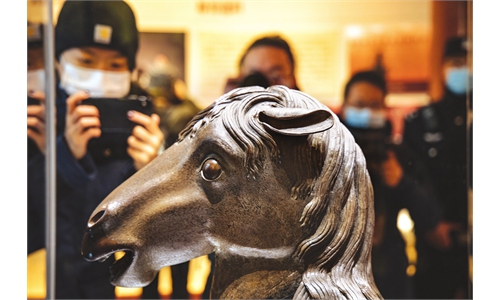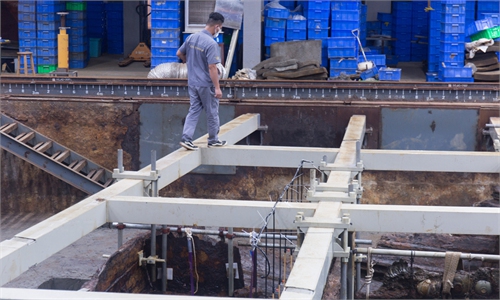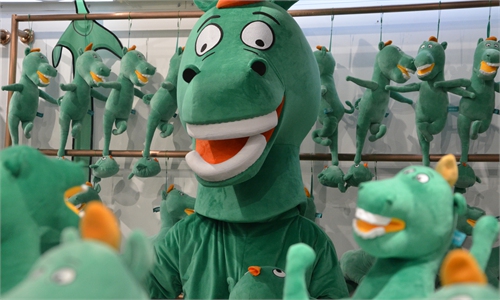ARTS / ART
The search for lost treasures
New book tells stories of looted Chinese relics taken overseas
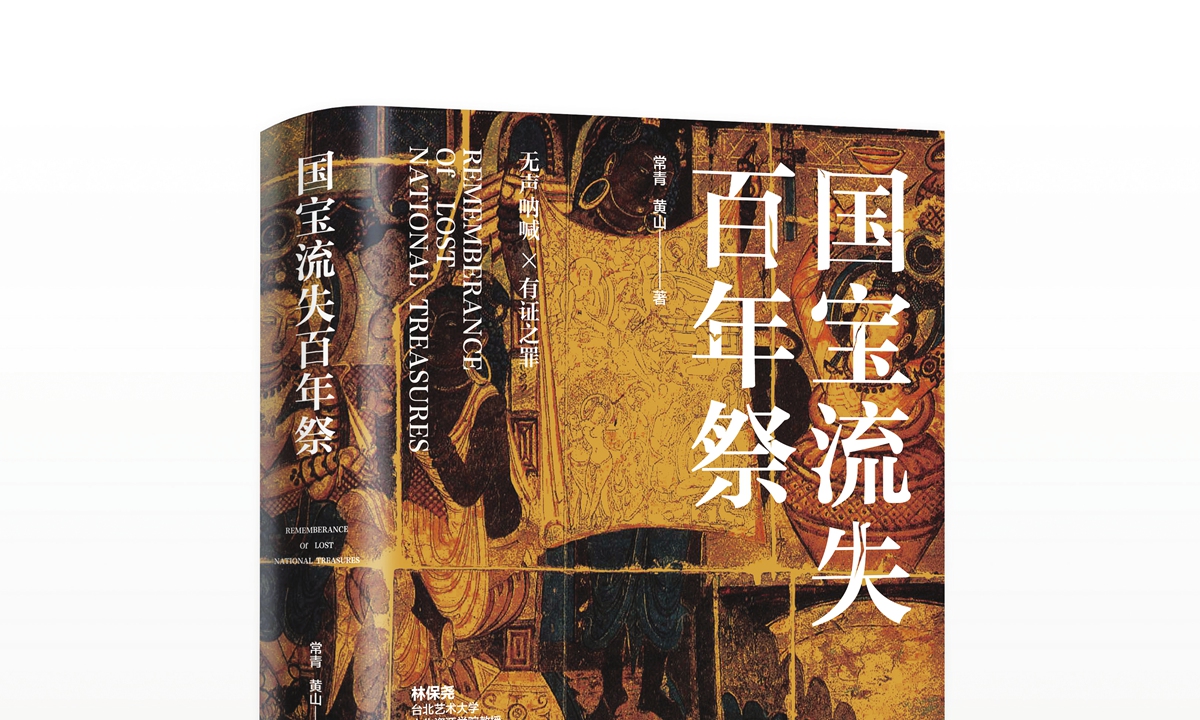
Remembrance of Lost National Treasures Photo: Courtesy of Zhejiang Ancient Books Press
In 1900, Swedish explorer Sven Hedin accidentally discovered the remains of an ancient walled city that was once the capital of the Loulan Kingdom buried under the desert in what is today Northwest China's Xinjiang Uygur Autonomous Region. His discovery ignited the treasure hunting dreams of overseas explorers, thus spelling a foreboding future for Chinese cultural relics.Following Hedin, Albert von Le Coq from Germany found extensive networks of Buddhist and Manichaean cave temples in the Xinjiang region. The "explorer" carved or sawed away numerous wall-carvings and precious icons - weighing more than 360 kilograms all told - and carried them back to Germany.
This is just one of the many stories describing the fate of more than 10 million Chinese cultural treasures looted from China over the past more than 100 years. Time has not buried the memories of these treasures and the general public in China has been growing more concerned about the whereabouts of these relics over the past few years since the government began paying increasing attention to archeology and cultural relic conservation.
Writing books to inform the public about the history of these relics is an important part of ensuring these repatriation efforts continue in the future.
Several books about looted cultural relics have been published recently, including Remembrance of Lost National Treasures by Chinese academicians Chang Qing and Huang Shan.
Scholar and detective
Published by Zhejiang Guji Press (Lit: Zhejiang Ancient Books Press) in July 2022, Remembrance of Lost National Treasures seeks to explain the history and cultural value of Chinese national treasures looted during the late 19th century and the early 20th century to readers, noting how these relics were lost and where they are now.
Huang Yujie, the editor of the book, told the Global Times that the book's greatest highlight is that it is the first systematic account of the looting of Chinese cultural relics by foreigners at a time when China was economically and militarily weak.
Chang, who studied at Peking University and the University of Kansas in the US and has worked at several US museums, agreed with Huang's assessment, noting that the newly published book focuses mainly on various foreign explorers' memories and experiences searching for different cultural treasures in China and that Hedin as well as Le Coq are both introduced.
The book also mentions cultural relics such as murals and Buddha statues taken from the Mogao Caves in Dunhuang, Northwest China's Gansu Province, by foreigners such as Landon Warner from the US.
"Many of these looted cultural relics are top-level national treasures. One of the most precious items in the collection at the Museum of Fine Arts in Boston is The Thirteen Emperors by the Tang Dynasty's (618-907) Yan Liben. Just a section of this Tang Dynasty painting could be a key highlight at any foreign museum," Chang told the Global Times.
He added that there nearly 500 ancient paintings dating from the Tang Dynasty to the Northern Song Dynasty (960-1127) have been lost overseas.
"How large is the loss for our country?" Chang noted.
Chang and Huang went through a diverse set of channels to learn all they could about the state of these cultural relics.
Huang, who is studying for his doctorate at the University of London's History Department, told the Global Times that she searched through publicly available information about the collections of museums all around the world to track the origins of these artifacts.
Some private material was more difficult to find. Huang said that she contacted the general manager of the Yamanaka & Company in Japan, which originally traded in art and antiques, through a curator at a US museum to gather more records.
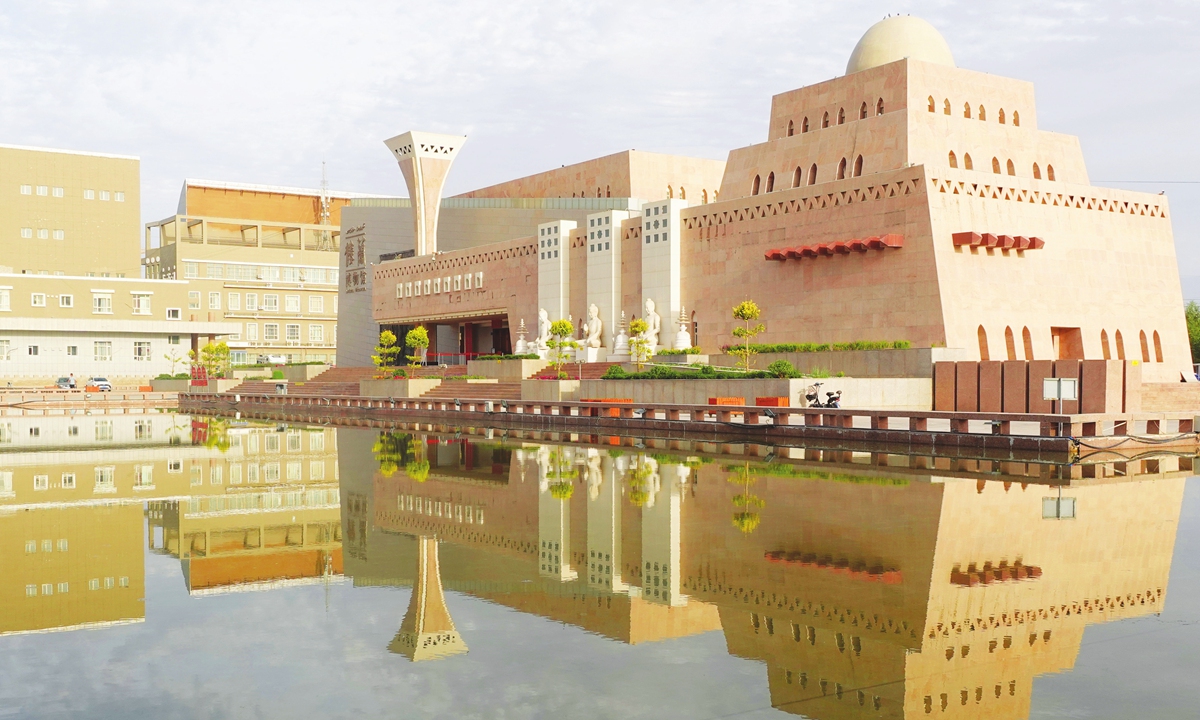
The Loulan Museum in Ruoqiang county, Northwest China's Xinjiang Uyghur Autonomous Region Photo: IC
Unending efforts"I hope this book is a beginning and can stimulate public interest in precious artifacts that are still scattered overseas," Huang noted.
Other Chinese academicians also have this same hope.
For instance, scholar Niu Xiangfeng published Zhonghua Liushi Wenwu Mizong (lit: Traces of Lost Chinese Cultural Relics) in September 2022 to educate the public about the relics looted during the razing of the Old Summer Palace in Beijing around the mid-19th century.
The 2019 book Treasures in Other Lands focuses on the lost relics of Chinese ethnic minority groups.
Additionally, Chinese organizations and activists are searching for looted relics in an effort to bring them home.
While working at an art gallery in the US, Chang got to observe the return of a stone sculpture stolen from an ancient grave in North China's Hebei Province in 1990s. The sculpture had been sold to an auction company in the US, but Chinese searchers uncovered evidence that it had been smuggled from China.
According to "The Convention on the Means of Prohibiting and Preventing the Illicit Import, Export and Transfer of Ownership of Cultural Property" signed in 1970, the sculpture was illegally sold and so was returned to its original country, Chang explained, noting that this was a successful attempt at using international law to recover a lost artifact.

